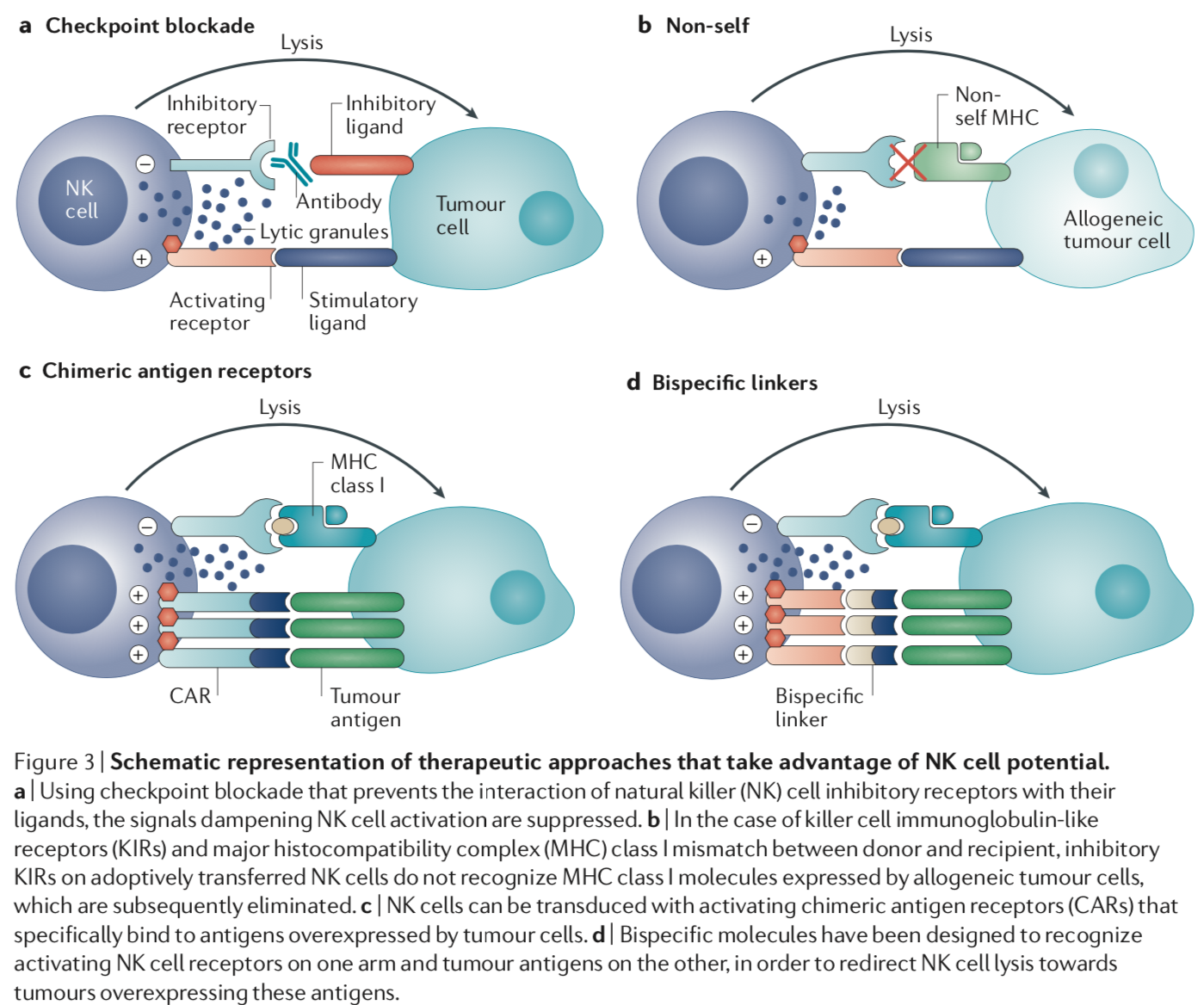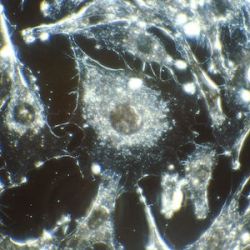Roaming through your body is a group of specialized immune cells that acts like the secret police. They ask other body cells to show them identification ("Papers please!"). If they fail to provide adequate ID, the cells are killed on the spot. No questions asked.
In other words, you can think of these cells as something like the Gestapo, except they're good guys. Known as natural killer (NK) cells, their main job is to protect you from cancerous or virus-infected cells. How do they do it?
In general, two things must happen before an NK cell attacks a target cell: (1) It must receive an activating signal from a body cell that says, "Kill me!" (2) It must not receive an inhibitory signal that says, "Wait, don't kill me!" This inhibitory signal is essentially a proper "ID card" known as a major histocompatibility complex I (MHC I) protein. When a body cell shows the NK cell this identification, the NK cell is temporarily satisfied and moves on to the next cell. If the next cell is not able to provide an MHC I molecule (or provides one that is otherwise "incorrect,"), it is assumed to be cancerous or virus-infected and is killed.

Source: Morvan & Lanier. Nature Reviews Cancer. 2016.
Demonstrating just how important NK cells are, epidemiological studies have shown that people who lack them are more susceptible to certain types of cancer. Furthermore, when a cell becomes cancerous, it develops ways to avoid the immune system, and evasion of NK cells is one mechanism by which they accomplish this.
Natural Killer Cells in Cancer Immunotherapy
Recently, I attended Immunology 2019, the 106th annual meeting of the American Association of Immunologists, which was held in San Diego. It was there that I was first introduced to the idea that NK cells could be used in cancer immunotherapy. Basic research into how NK cells operate and how cancerous cells subvert them is showing scientists how to recruit NK cells into the war against cancer. The diagram below shows four strategies that are being developed:

Source: Morvan & Lanier. Nature Reviews Cancer. 2016.
Panel A shows that antibodies can block the inhibitory ("Wait, don't kill me!") signal, which gives an NK cell a green light to kill the target. Panel B depicts that if a cancer patient receives NK cells from a donor, those donated NK cells will not be able to recognize the inhibitory signal from the recipient's MHC I (the "ID card"), once again giving the (donated) NK cells a green light to kill the target.
Genetic engineering can also play a role. Panel C shows that a patient's NK cells can be genetically engineered to express an artificial receptor (known as a chimeric antigen receptor, CAR) to kill cancerous cells. (This technology has already been used in T cells.) And Panel D shows that specific molecules can be designed that serve as a "bridge" linking NK cell receptors to cancer cell surface proteins, triggering the activation signal for killing.
Cancer will continue to be a scary diagnosis, but thanks to advances in modern medicine, cancer mortality rates have been falling steadily for years. That is thanks to the many smart scientists developing clever new technologies to beat back the monster.
Source: Maelig G. Morvan & Lewis L. Lanier. "NK cells and cancer: you can teach innate cells new tricks." Nature Reviews Cancer 16: 7-19 (2016). DOI: 10.1038/nrc.2015.5

